Strength training equipment plays a crucial role in achieving your fitness goals at home. With the right strength training equipment, you can create a personalized gym that is both effective and convenient
Creating a home gym is more than just adding machines to a room. It’s about designing a space that aligns with your fitness dreams and keeps you motivated. With the right strength training equipment and planning, any area can become the perfect spot to build strength and confidence.
Start with the basics: an adjustable bench and versatile dumbbells that allow you to change weights easily. These pieces of strength training equipment are essential for a variety of exercises and won’t break the bank. As you progress, you can add more specialized gear to target specific fitness goals.
Table of Contents
Essential Strength Training Equipment : Key Takeaways
- Home gyms offer convenience, privacy, and long-term cost savings
- Start with essential equipment like adjustable benches and dumbbells
- Dedicate a specific area for your workout space
- Consider your fitness goals when selecting equipment
- Gradually build your gym setup over time
- Invest in good flooring for safety and effectiveness
- Use resistance bands for cost-effective versatility
Benefits of Creating a Home Gym
Creating a home gym has many benefits for those who love to work out. It can change your workout routine for the better. Let’s look at why having your own fitness space is a big plus.
Cost-effective in the long run
Setting up a home gym can save you money in the long run. The initial costs might seem high, but you avoid monthly fees and travel expenses. Many stores offer payment plans, making it easier to get started.
Convenience and time-saving
A home gym saves you time and effort. You don’t have to travel or wait for equipment. This makes it easier to stay on track with your workouts. You can work out whenever you want, fitting it into your busy schedule.
Privacy and personalization
Your home gym is a private place where you can work out without worry. Many people prefer this because they don’t like being judged. You can make your space your own, creating a place that motivates you.
| Benefit | Home Gym | Commercial Gym |
|---|---|---|
| Cost | One-time investment | Recurring membership fees |
| Availability | 24/7 access | Limited hours |
| Privacy | Complete privacy | Shared space |
| Customization | Fully customizable | Limited options |
Creating a home gym is an investment in your health and fitness. It offers convenience, privacy, and the chance to make your space your own. This can lead to more consistent workouts and better results.
Assessing Your Available Space
When planning your home gym, start by checking your space. You might have a spare room, basement, or garage. A good workout room is about 250-300 square feet. But, even smaller spaces can work well with smart planning.
Use blue painter’s tape to map out your area. This trick helps you see how your gym will look and flow. Make sure to leave enough space, like 6 feet behind a treadmill, for safety.
- Room dimensions
- Ceiling height
- Natural light sources
- Electrical outlets
- Flooring type
A well-planned gym layout makes a big difference. Divide your space into zones for different activities. This way, you use your space better.
| Zone | Space Allocation | Equipment Examples |
|---|---|---|
| Cardio | 30% | Treadmill, Bike, Rower |
| Strength Training | 40% | Weight Rack, Bench, Dumbbells |
| Functional Training | 20% | Resistance Bands, Kettlebells |
| Stretching | 10% | Yoga Mat, Foam Roller |
By carefully planning your home gym, you’ll make a space that boosts your fitness. It’s all about using your space wisely.
Identifying Your Fitness Goals
Knowing what you want to achieve in fitness is key when setting up your home gym. Your goals help you plan your workouts and choose the right equipment. This makes your gym setup effective.
Strength Training Focus
If you want to build muscle, focus on free weights and resistance gear. Dumbbells, barbells, and weight machines work on different muscles. They support a wide range of strength training.
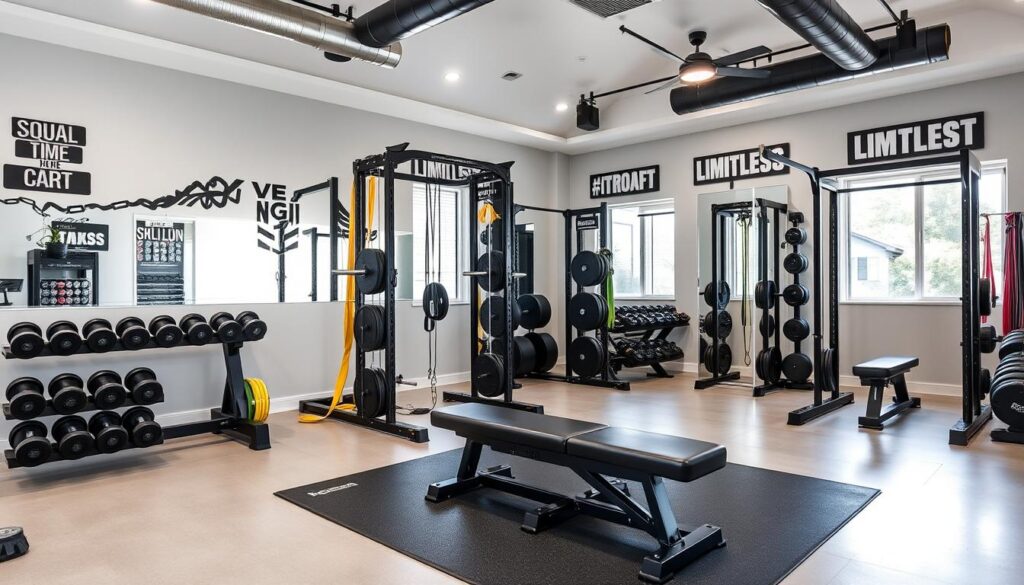
Cardio and Endurance Goals
For better heart health, think about getting a treadmill, stationary bike, or rowing machine. These machines help improve endurance and aid in weight loss. They’re great for regular cardio workouts.
Flexibility and Mobility Needs
Don’t forget about flexibility in your fitness plan. Yoga mats, foam rollers, and resistance bands improve mobility and help with recovery. They add to your strength and cardio routines, boosting overall fitness.
| Fitness Goal | Recommended Equipment | Benefits |
|---|---|---|
| Strength Training | Free weights, Resistance bands | Muscle growth, Increased strength |
| Cardio | Treadmill, Stationary bike | Improved endurance, Weight loss |
| Flexibility | Yoga mat, Foam roller | Better mobility, Faster recovery |
Your fitness journey changes over time. Pick equipment that can grow with you. With the right tools, your home gym will support your fitness journey.
Essential Strength Training Equipment
Building a home gym needs careful picking of weight lifting gear. The right equipment can greatly impact your fitness journey. Let’s look at the key items for your personal gym.
Barbells and Weight Plates
A good Olympic barbell is crucial for any gym. Choose bars that can handle over 1,000 pounds. Also, get weight plates that cost less than 50 cents per pound.
Power Rack or Squat Stand
Safety is key in lifting. A power rack or squat stand is vital for safe squats and bench presses. It lets you lift heavy without a spotter.
Adjustable Bench
An adjustable bench is both versatile and space-saving. It supports many exercises, from flat bench presses to incline flyes. Make sure it’s sturdy for your lifting needs.
Dumbbells or Adjustable Dumbbells
Dumbbells are key for focused movements and training one side at a time. Adjustable dumbbells save space and money. Brands like PowerBlocks offer great options for various weights.
Remember to add kettlebells to your gear. They’re great for full-body workouts and offer unique benefits over traditional weights.
| Equipment | Benefits | Usage Frequency |
|---|---|---|
| Barbells | Compound movements, heavy lifts | 3-6 times per week |
| Dumbbells | Isolated exercises, muscle balance | 4-5 times per week |
| Kettlebells | Dynamic workouts, cardio-strength blend | 2-3 times per week |
| Adjustable Bench | Versatility in exercises | 3-4 times per week |
With these key pieces, you’ll be set to reach your fitness goals from home.
Supplementary Equipment for a Well-Rounded Gym
Building a great home gym is more than just weights. You need resistance bands, cable machines, and cardio gear. These add variety and target different muscles.
Resistance bands are versatile and affordable. They offer strength gains like weights but save space. They’re perfect for adding variety to your routine.
Cable machines are great for working muscles in different ways. They offer smooth movements and adjustable settings. Though more expensive, they’re a must-have for serious gym-goers.
Cardio equipment completes your gym. You can choose from treadmills, bikes, or rowing machines. These help with endurance and go well with strength training. Plus, a home steam sauna can help with recovery.
| Equipment Type | Space Required | Price Range | Versatility |
|---|---|---|---|
| Resistance Bands | Minimal | $20 – $100 | High |
| Cable Machine | Moderate | $500 – $2000 | High |
| Treadmill | Large | $500 – $3000 | Moderate |
| Rowing Machine | Moderate | $300 – $2000 | High |
Start with affordable options to see if you’ll stick with it. This way, you can grow your gym over time. It ensures it fits your changing fitness goals.
Creating an Efficient Layout
A well-designed home gym layout boosts workout efficiency and safety. It makes the most of your space and meets your fitness needs. Let’s look at the key parts of organizing your workout space for the best fitness room layout.
Zoning Your Gym Space
Split your gym into different zones for various activities. Set up areas for strength training, cardio, and flexibility exercises. This way, you improve flow and efficiency. Place cardio equipment near windows for a boost during workouts.
Ensuring Proper Equipment Spacing
It’s important to have enough space between equipment for safety and function. Make sure there’s room to move freely around weights and machines. Think about your home gym space size when choosing and placing equipment.
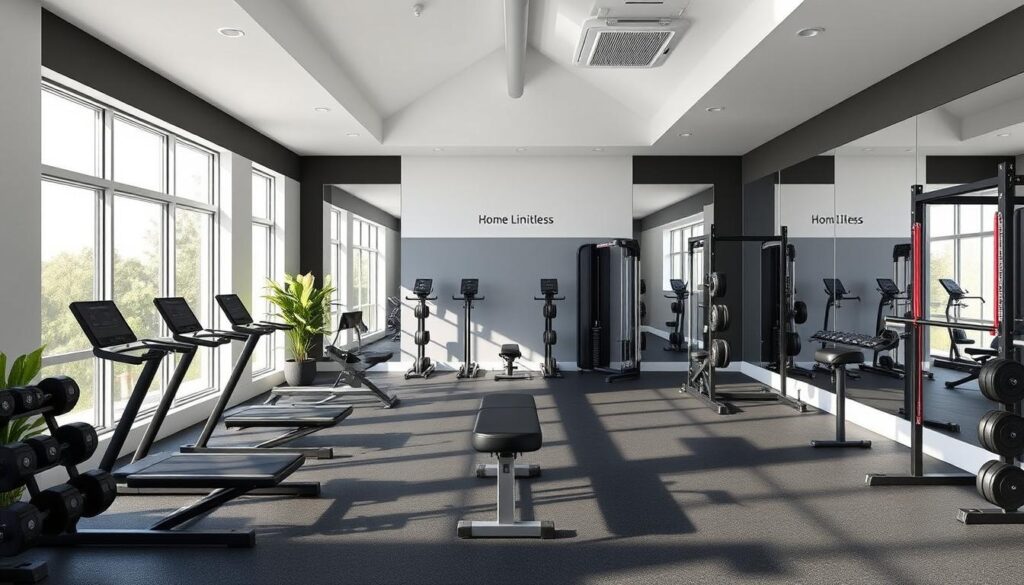
Safety Considerations
Make safety a top priority in your fitness room layout. Use proper flooring to protect surfaces and prevent slips. Ensure there’s enough light to reduce accident risks. Place heavy equipment against walls for stability. Keep paths clear for easy movement.
| Zone | Equipment | Space Requirement |
|---|---|---|
| Strength | Weights, Racks | 50-100 sq ft |
| Cardio | Treadmill, Bike | 30-50 sq ft |
| Flexibility | Mats, Bands | 20-30 sq ft |
Your home gym design should grow with your fitness journey. Leave space for new equipment and growth. By following these tips, you’ll have a functional and motivating workout space that supports your fitness goals.
Budgeting and Prioritizing Purchases
Creating a home gym needs careful planning and budgeting. The cost can vary from $200 to $15,000, based on your goals and space. Focus on buying versatile gear that meets your fitness needs.
Begin with key items like adjustable dumbbells. They can replace up to 28 sets of regular dumbbells. This is great for saving space and money. Also, consider a power rack with a pull-up bar for more functionality.
To save money, look for deals on used equipment on Facebook Marketplace. Make sure to choose high-quality items like barbells and racks. Invest in durable gear to last long and ensure safety during workouts.
| Equipment | Price Range | Benefits |
|---|---|---|
| Adjustable Dumbbells | $200 – $500 | Space-saving, versatile |
| Power Rack | $300 – $1000 | Multi-functional, safety |
| Resistance Bands | $20 – $100 | Portable, affordable |
| Jump Rope | $10 – $50 | Improves endurance, coordination |
Don’t forget to include renovation costs in your budget. Good flooring, lighting, and ventilation make your gym comfortable and motivating. By choosing the right equipment and making smart buys, you can create a great home gym without spending too much.
Enhancing Your Home Gym Atmosphere
Creating the perfect home gym design is more than just picking equipment. It’s about making a space that gets you pumped up and ready to go. Let’s look at the key things that make your workout area look great and feel right.
Lighting and Ventilation
Good lighting is key for a lively gym vibe. Use dimmable recessed lights to adjust the brightness. For a chill spot, add softer lights. Don’t forget about air flow. Make sure your gym has enough air to keep you cool during tough workouts.
Flooring Options
Pick flooring that’s tough and easy to clean. Rubber mats are great for absorbing shock and lasting long. They’re ideal for intense exercises and lifting. For a sleek look, consider engineered wood flooring. It’s stable and can be refinished to last through heavy use.
Motivational Elements
Add things that make you want to do better. Mirrors help with form and make the space seem bigger. Hang up posters or quotes that motivate you. A good sound system can really get you pumped up during your workout.
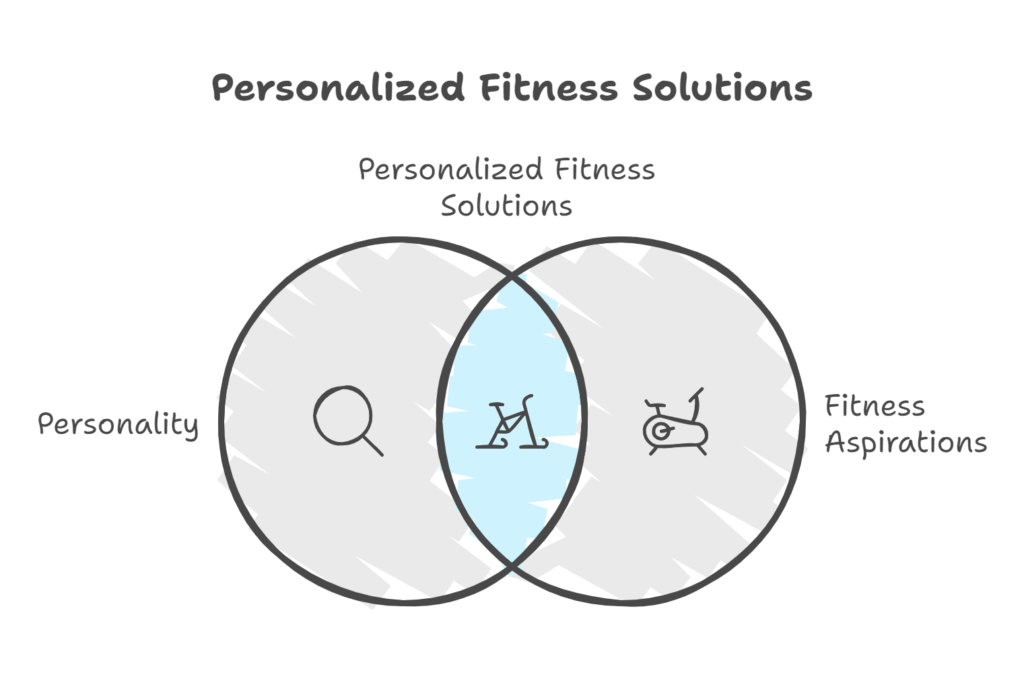
Paint your walls in colors that energize or help you focus. Light colors like soft whites or blues can make your space feel bigger and calmer. Your gym’s vibe should motivate you to come and give it your all every day.
Conclusion
Setting up a home gym with strength training equipment is a smart investment in your long-term health and fitness. With the right strength training equipment, you can create a versatile workout space that meets all your needs.
When picking between free weights and machines for strength training at home, think about your level and goals. Machines are great for beginners or focusing on specific muscles. Free weights, however, work more muscles and boost coordination.
It’s important to mix both free weights and machines in your gym. Doing strength training at least twice a week helps build muscle and fights health problems. A well-thought-out home gym sets you up for lasting fitness success and fun.



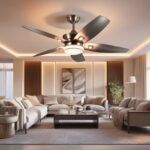


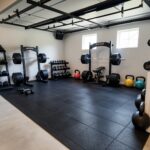
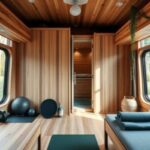
5 thoughts on “How to Build a Home Gym?| 9 Best Strength Training Equipment Essentials”